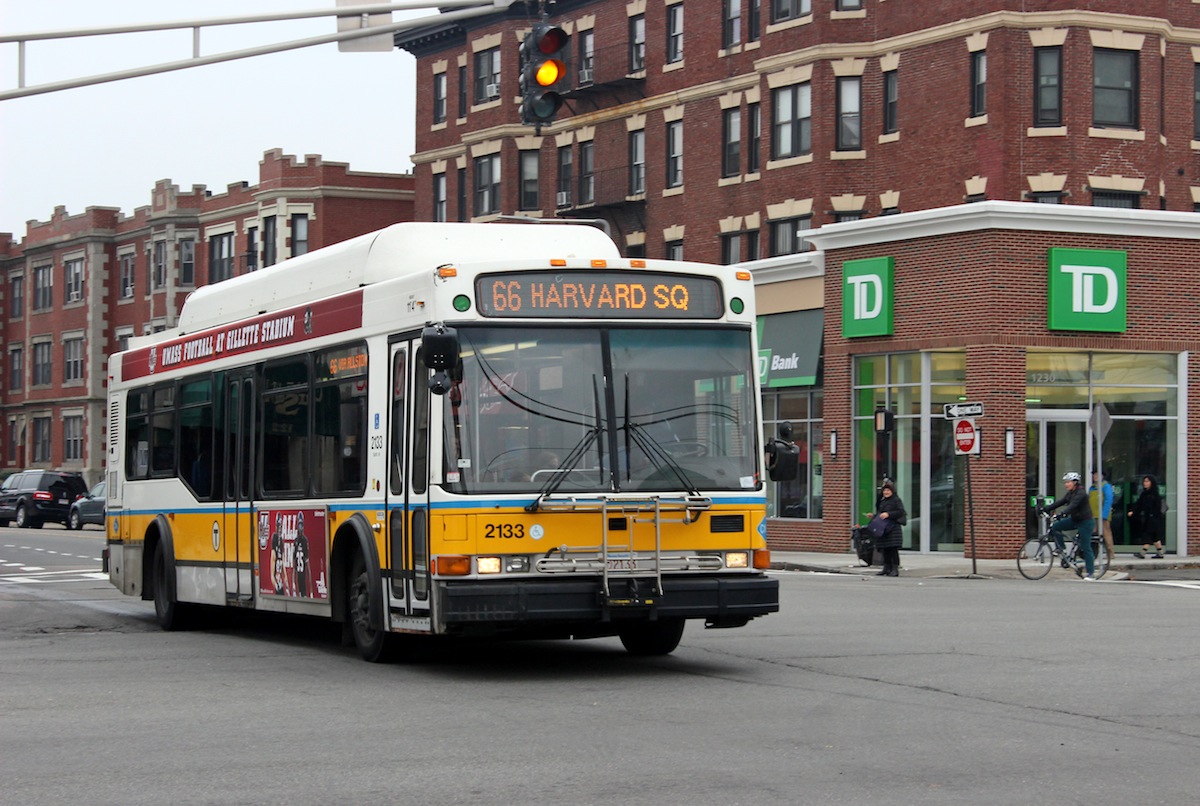MBTA’s New Bus Surveillance Is So Advanced, You Could Watch it From China
It’s no secret that the MBTA has beefed up security on its buses by adding high-tech cameras with live-streams of in-vehicle activity that can be viewed by Transit Police nearby, or officials behind computer screens in remote locations.
But just how powerful the overall system actually is might shock passengers.
According to Randy Clarke, senior director of security and emergency management for the MBTA, transit officials can sign in and watch the live-streams of what’s going on inside a given bus from places as far away as China, if they feel so inclined.
“It works everywhere—you can literally, at all of our control centers, can be watching buses all over the place,” Clarke told a room full of attendees at the “Secured Cities” conference in Baltimore in November. The video of Clarke’s presentation was posted to YouTube December 11.
“I was just looking at a bus in my hotel room,” he said. “I could be in Shanghai—it doesn’t matter—everything is network-based, and we could watch live video coming through all that.”
As Boston reported back in November, 60 new buses being introduced to the T’s fleet will be equipped with high-tech, on-board video recording and surveillance systems that feature a capability called “Live Look In.” This feature gives MBTA Transit Police in cruisers the ability to pull up near a bus, and get a peek at what’s happening inside in real-time. Officials can also monitor activity from remote locations, like a hotel room in Baltimore, per Clarke’s example, 400-miles away from Boston. The MBTA’s transportation executives also have access to the feeds.
The MBTA uses the “Genetec Omnicast” system for its buses, which is offered by Minuteman Security Technologies. This gives them access to live video from operations control centers, automatic off-loading of video to long-term archiving when buses reach the terminals, and police officer data access to nearby bus systems via cruiser mobile terminals, according to a recent article written by Clarke, flaunting the system’s capabilities.
“Is it the ultimate in ‘Big Brother?’ Ya,” said Clarke in the video. “I say to myself in 30 years I’ll probably regret everything we’ve done for video, but it’s making a difference.”
The T has had cameras on buses—at least half of their fleet—for the last eight years. But the new “bus project” recently introduced “changes everything,” Clarke said at the convention. Besides the 60 new buses, 225 buses in the current fleet of 1,100 also have the new live-feed cameras installed. Those were paid for through a $7 million Department of Homeland Security grant.
Clarke went on to outline the specs in each vehicle:
Each bus is outfitted with two 360-degree cameras—one interior fixed high-definition camera and three external 720p high-definition cameras, all from Panasonic. Video is continuously recorded and stored on each of the buses network video recorders (NVR). To support the sophisticated infrastructure of this application, Ethernet switches from Moxa were selected for industrial-grade reliability, network redundancy, and seamless integrated security. On the bus, a monitor displays a live camera feed to passengers.
Similar technology will likely be installed on the MBTA’s new Red and Orange line trains, which are expected to enter into service beginning in 2018.
Clarke said the cameras are helpful when combating criminal activity, and can act as a deterrent. “We have no problem publicly shaming people,” said Clarke at the conference, referencing the cameras catching people committing crimes. “We show clips on TV. The media loves this stuff.”
Kenneth Sprague, deputy chief of the MBTA’s Investigative Services Division, agreed that the cameras improve safety.
“We might not see the actual crime take place, but there is usually activity that leads up to a crime,” Sprague said in a statement. “Whether it’s identifying a car in the vicinity or verifying a suspect’s alibi, we have the ability to view, validate and retrieve information in a timely manner. That’s a huge asset for our team’s ability to gather video for forensic evidence and keep this city safe.”
The video footage captured is also often shared with police departments around the state, if requested.
To see Clarke’s full remarks on the “Live Look In” camera system, watch the video below:



